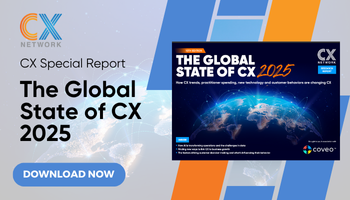A golden rule for gaining C-suite buy-in for your CX initiatives
Discover how an understanding of behavioral economics can be used to secure C-suite support for your CX initiatives
Add bookmark
Are you struggling to get executive support for your customer experience (CX) initiatives? Despite solid arguments and well-justified proposals, do you often leave meetings empty-handed? If so, it's time to harness the power of behavioral economics to mobilize your C-suite.

Don't miss any news, updates or insider tips from CX Network by getting them delivered to your inbox. Sign up to our newsletter and join our community of experts.
What is behavioral economics?
The field of behavioral economics studies and describes the economic decision-making of individuals, recognizing that these decisions are influenced by psychological, social, cognitive, and emotional aspects. It explains these behaviors through mental biases and heuristics.
This hack uses three common biases and heuristics:
- Loss aversion is a principle that suggests people feel the pain of a loss more intensely than the pleasure of an equivalent gain.
- Social influence refers to the way a person's decisions and behaviors are affected by the actions and opinions of others.
- The endowment effect is the tendency for people to value items they already own more highly than those they do not own.
Cost of inaction Vs Return on Investment
Picture this: you have spent countless hours crafting an ambitious initiative to transform customer experience. You are ready to present, confident in your data and reasoning. Yet, when you face the executive team, you encounter unexpected resistance. Some leaders fixate on short-term financial results, while others acknowledge your points but remain hesitant to act. Sound familiar?
To overcome this hurdle, let's explore a tactic rooted in behavioral economics, focusing on two key concepts: Cost of inaction (COI) and return on investment (ROI)
First, highlight the cost of inaction. Begin by clearly defining the COI. This encompasses both tangible and intangible losses your company faces by not improving customer experience.
Consider factors such as customer churn, reputational damage, decreased operational efficiency and lost market share. By emphasizing these potential losses, you tap into the psychological principle of loss aversion, creating a sense of urgency among decision-makers.
The crucial insight here is to make it clear that saying no to your initiative is equivalent to saying yes to the COI.
Next, showcase the ROI. Present compelling ROI data. Highlight how competitors and industry leaders have captured value through CX investments. Showcase metrics such as increased customer satisfaction scores, improved operational efficiency, enhanced innovation capabilities and strengthened competitive advantage.
This approach combines potential gains with social proof, further motivating the C-suite to act.
RELATED CONTENT: Proving ROI in CX: A step-by-step
guide for practitioners
The benefits of collaboration
Involve your executives in understanding and validating the COI and ROI calculations. This collaborative approach serves two purposes: it builds confidence in the figures presented and fosters a sense of ownership over the initiative, leveraging the endowment effect.
By shifting the narrative from "your initiative" to "our initiative", you are more likely to secure genuine commitment to transforming customer experience.
Executives who feel ownership of a CX initiative are more likely to actively promote the project, contribute to its success, and maintain long-term momentum. This sustained support is crucial for driving meaningful change in customer experience.
By combining the COI (triggering loss aversion) with solid ROI data (highlighting gains and social influence), you create a powerful case for CX investment.
This strategy activates key psychological drivers, helping you overcome resistance, break the status quo, and drive decisive action.
RELATED CONTENT: Five things all CX leaders need to prioritize
Taking the next steps
Are you ready to apply this hack and elevate customer experience in your company?
Gaining C-suite support for CX initiatives can be challenging, but by applying principles of behavioral economics, this process can become significantly more effective.
Utilizing concepts such as loss aversion, social influence and the endowment effect not only makes arguments more persuasive but also aligns initiatives with how humans make decisions.
The combination of these elements — urgency created by the Cost of Inaction (COI), the appeal of benefits through Return on Investment (ROI), and the sense of ownership fostered by collaboration — forms an integral and effective strategy to secure senior management support.
Let's leverage these principles and approaches to elevate customer experience in our organizations, ensuring that every interaction and decision is aligned not only with enhancing customer experience but also with driving your company’s future success and growth.
Special Report: The Global State of CX

Tenth annual flagship report. AI has transformed CX, raising expectations with investment in AI for CX automation, machine learning, and conversational AI now a top priority. Download the Global State of CX to learn how the industry is preparing for the new AI first future.
Download Now
































